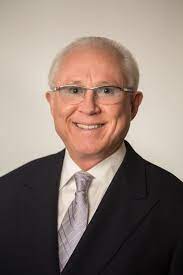Carriage Service’s CEO Mel Payne on “Death Care financing transformation”

Melvin Payne
CEO
Carriage Services
I’ve written before about Peter Lynch’s 1989 best-seller “One up on Wall Street”. It was a learning book for me and one where I had a coming of age introduction to different types of investing. One of Lynch’s topics in the book was the death care company Service Corporation International (SCI). He likened the company to a company that could produce plastic knives and forks. . . . slow, but steady growth with increasing profits each year.
It was about that time that banker Mel Payne was putting together what became public death care company Carriage Services in 1991. Payne comes from a banker’s background, not a funeral service background, but he saw potential in that slow, steady industry of death care. Payne has continued to be the only CEO the company has ever had and has led the company to record revenues and earnings over the years.
In Carriage Services’ recent press release to investors concerning the company’s 4th Quarter and Year End results of 2021 Payne takes time to note a couple of notable achievements for the public death care sector in 2022 and compares them to his start in the sector in the 1990’s. And, these observations would seem to have positive ramifications for these public death care consolidators going forward.
Now, I operated a medium sized funeral home – 300 calls – so I wasn’t a Melvin Payne. But, one of the things I noticed in my business that was different from my community friends’ other types of business is, outside of my facility and fleet, there were not a lot of large asset purchases or operating costs in the category of Research and Development that many of my friends had. In essence, I didn’t need an influx of new machines each year nor did I have to fund annual technical or engineering expenses each year. That nuance allowed me to have a high percentage of my revenue flow to the bottom line or what Payne would call “Free Cash Flow”. As a matter of fact, I had years where a full 50% of my revenue flowed to cash on the bottom line (FYI – The secret I discovered to do this was increasing case volume while at the same time keeping fixed costs static). . . . . What one does with that cash-flow can be debated depending on tolerance levels. Thoughts of growth, thoughts of financial security, and more ideas come to mind. In my case, I used much of it for staff bonuses and extra retirement savings for myself.. . . . . .Suffice it to say, “It is a good problem to have”.
By the way, Lynch, in his book noticed this same non-asset cost bias about Service Corporation International. I’m paraphrasing but he says something to this effect, “SCI is in a low-tech industry and doesn’t have an M.I.T. grad trying to invent a new widget to do funeral service better every year.”
So, in Payne’s press release, that you can read here, he opines that Carriage Services, and SCI for that matter, have turned into “Free Cash Flow Machines”. (Payne’s emphasis, not mine). Payne opines in his statement that this Free Cash-Flow will allow the consolidators “to self-finance a meaningful highly selective acquisition growth strategy without becoming over-leveraged. . “ Which essentially means that they don’t have to borrow much money (in relative terms) to acquire new firms. . .which then completing the cycle means that they will be able to pay less principal and interest and create more cash-flow to just keep the cycle going.
He explains that it is a lot different from when he started in the 1990’s when “(lots of) external bank debt and secondary equity offerings to execute an aggressive growth by acquisition consolidation mania. . .” were necessary.
Payne further opines that “Carriage for the first time in our 30 year history is in a “Value Creation Sweetspot” (again Payne’s emphasis, not mine) with an accelerating offense from Free Cash Flow and a Capital Allocation Strategy that produces balanced and highly profitable revenue growth. . . . ”
The point of this article, from my point of view to owners and operators of death care establishments, is to be aware of the cash-flow you are generating. And, then to take that cash-flow and distribute it in an effective way to accomplish what you want to accomplish. It doesn’t have to be to buy more firms. . . I was totally content to be very selective in acquisitions and pour the money into savings. Each operator will have different goals, ambitions, and tolerances. Make sure that you know what yours are so you can make the most of the free-cash flow you are generating.
Disclaimer– The author of this article holds a stock position in Service Corporation International
More news from the world of Death Care:
- Navigating Grief: How COVID changed the funeral business in Bloomington-Normal. Video story and print article. The Pantagraph (IL)
- What’s a Natural Burial? A Christian theologian explains. The Conversation
- Hull baby loss charity receives 15,000 pounds ($19,600 US dollars) from cremation metal sale. BBC News (Great Britain)
- Vegas man opens new funeral home to give back to the community. Las Vegas Optic (NV)
Enter your e-mail below to join the 2,609 others who receive Funeral Director Daily articles daily:




















